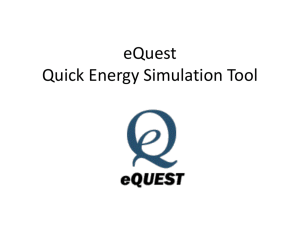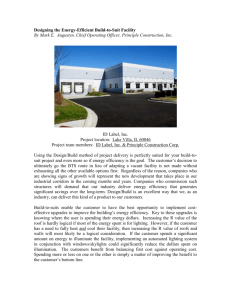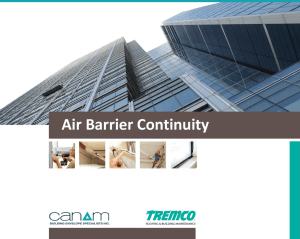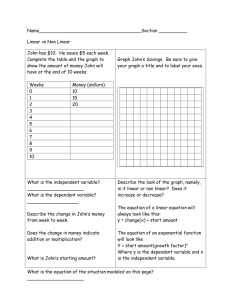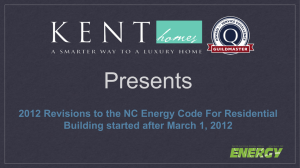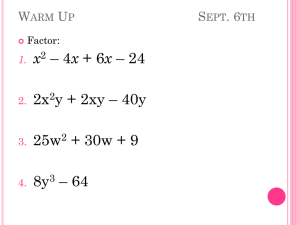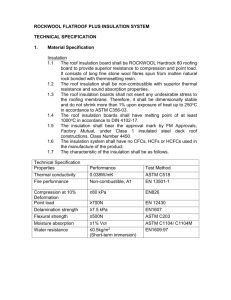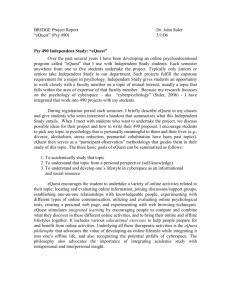Building Envelope Site Assessment Guidance (MS Word)
advertisement
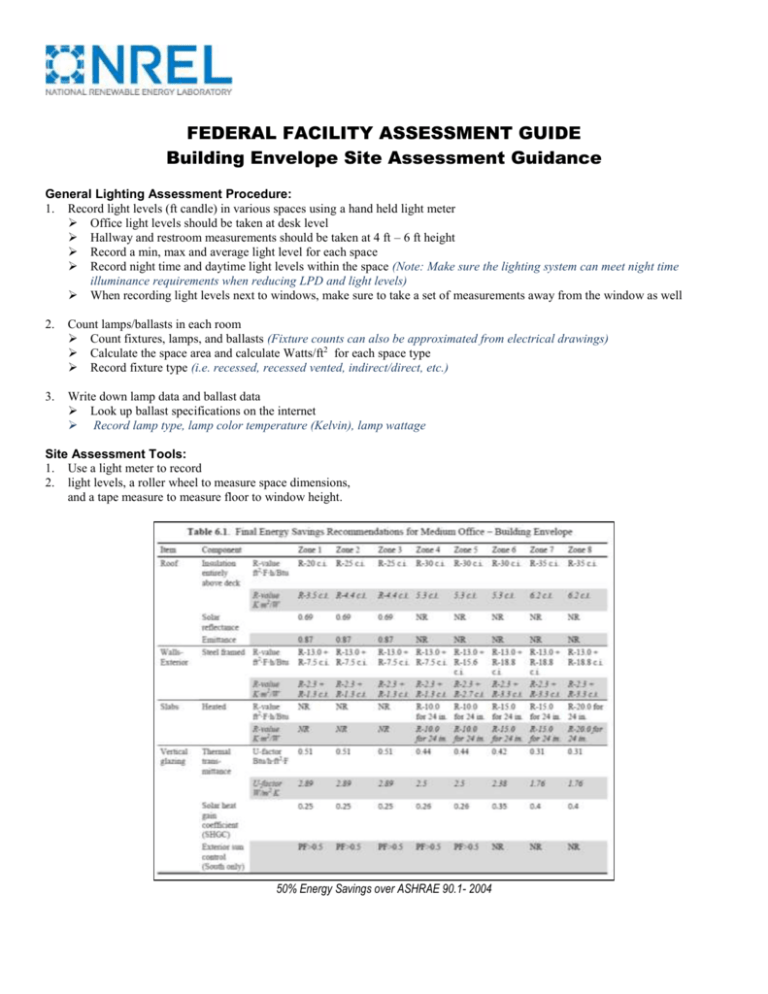
FEDERAL FACILITY ASSESSMENT GUIDE Building Envelope Site Assessment Guidance General Lighting Assessment Procedure: 1. Record light levels (ft candle) in various spaces using a hand held light meter Office light levels should be taken at desk level Hallway and restroom measurements should be taken at 4 ft – 6 ft height Record a min, max and average light level for each space Record night time and daytime light levels within the space (Note: Make sure the lighting system can meet night time illuminance requirements when reducing LPD and light levels) When recording light levels next to windows, make sure to take a set of measurements away from the window as well 2. Count lamps/ballasts in each room Count fixtures, lamps, and ballasts (Fixture counts can also be approximated from electrical drawings) Calculate the space area and calculate Watts/ft2 for each space type Record fixture type (i.e. recessed, recessed vented, indirect/direct, etc.) 3. Write down lamp data and ballast data Look up ballast specifications on the internet Record lamp type, lamp color temperature (Kelvin), lamp wattage Site Assessment Tools: 1. Use a light meter to record 2. light levels, a roller wheel to measure space dimensions, and a tape measure to measure floor to window height. 50% Energy Savings over ASHRAE 90.1- 2004 FEDERAL FACILITY ASSESSMENT GUIDE Building Envelope Checklist Install Additional Insulation in Exterior Walls Adding insulation to exterior walls can reduce the heat gain or loss through the building envelope and save energy on maintaining comfortable conditions inside of the building. EIFS can be used for exterior insulation. Loose-fill can be used for enclosed existing wall, and hard to reach places. Rigid fibrous insulation is good for ducts in unconditioned spaces or other places requiring insulation that can withstand high temperatures. Sprayed foam and foamed-in-place insulation can be used in enclosed existing wall. Energy savings can be modeled in eQUEST. Seal Areas of Infiltration in Exterior Walls Using caulk or weather-stripping to seal areas of infiltration can reduce the amount of unconditioned air that enters the building, and save significant amounts of energy. Energy savings can be modeled in eQUEST. Fix Rain Leaks in Exterior Walls Rain leaks are indications of improper installation of siding material, poor-quality flashing, and weatherstripping or caulking around exterior joints. This can cause a drainage-plane within the wall system f the building and significantly damage the building envelope. Install Solar Shading Features on South-Facing Facades Installing high-quality fenestration and shading features such as landscape (trees, hedge rows), overhangs or fins, lightshelves, and blinds can save heating/cooling energy as well as save on electrical lighting if designed properly. Shading features should be installed on all South-facing facades. Energy savings can be modeled in eQUEST. Replace Old or Single-Pane Windows New window technologies can save significant amounts of energy. Old and metal window frames should be replaced with non-metal insulating frames. Old or single-pane windows should be replaced with double or triple-pane glass with insulating gas (argon or krypton). Also, the new glass should be specified based on climate with tints, heat reflective coatings (low-e), or laminates. Energy savings can be modeled in eQUEST. Add Film to Old or Single-Pane Windows New window film technology can significantly save energy by reducing solar heat gain into the building. Old or single-pane windows should be retrofitted with low-e products or blue/green tints that combine low SHGC with high VLT. Energy savings can be modeled in eQUEST. Install Revolving Doors Revolving doors reduce the amount of unconditioned air entering the building by a factor of 8, when compared to standard swinging doors. This reduction in infiltration will significantly reduce the energy required for heating and cooling loads. Revolving doors should replace swinging doors where applicable. Energy savings can be modeled in eQUEST. Create Entrance Vestibule with Two Doors Entrance vestibules reduce the amount of unconditioned air that enters the building, and reduces the energy required for heating and cooling loads. Single door entrances should be replaced with two door entrance vestibules. Energy savings can be modeled in eQUEST. Install Weather-Stripping Around Loading Dock Doors The irregular surfaces and mounting hardware of rolling doors require heavy duty weather-stripping (vinyl or wood pile, neoprene bulb, neoprene baffle). All loading dock doors should be insulated to reduce heat transfer through the building envelope and reduce energy. Energy savings can be modeled in eQUEST. Increase Roof Insulation Increasing the amount of roof insulation will reduce heat transfer through the building envelope and reduce energy demands. Loose-fill, sprayed foam, or foamed-in-place insulation can be used in unfinished attic floors. Batt or roll insulation can be used in unfinished attic walls and ceilings. Energy savings can be modeled in eQUEST. Retrofit Existing Roof with Green Roof or Cool Roof Retrofitting an Old roof with a green roof or cool roof can save significant amounts of energy. Energy savings can be modeled in eQUEST. The following websites can be useful for calculating savings and searching for products: http://www.ornl.gov/sci/roofs+walls/facts/CoolCalcEnergy.htm http://www.energystar.gov/index.cfm?c=roof_prods.pr_roof_products http://www.roofcalc.com/RoofCalcBuildingInput.aspx
